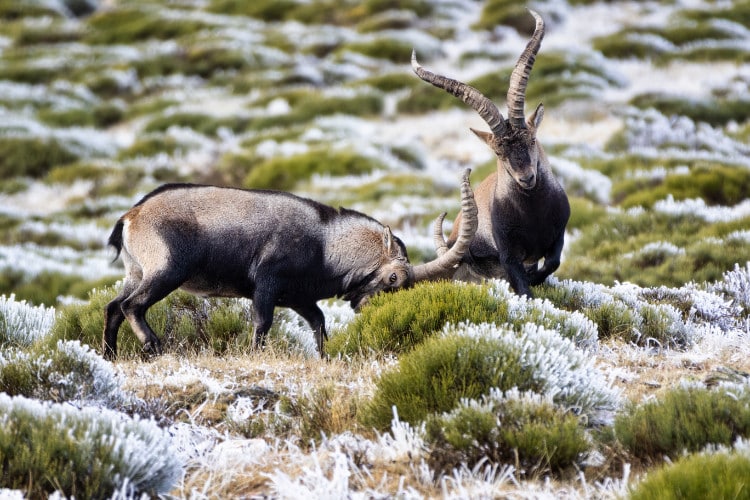
Ibex - Forst Eibenstein
The ibex, also known as the ibex, is a fascinating animal species native to the high altitude mountainous regions of Eurasia. With its imposing appearance and impressive capabilities, the Ibex has attracted the attention of nature lovers and researchers alike.
The Ibex is known for its rugged adaptability to extremely steep and rocky terrain. His strong legs and hooves enable him to balance safely on the rugged hilltops and climb inaccessible ledges. These adaptations are critical to surviving in the alpine regions where the Ibex lives.
A striking feature of the Ibex is its imposing curved horns. In males, the horns are larger and more impressive than in females. The horns serve a variety of purposes, including defense against predators and rivals, as well as impersonation when seeking mates. They are a symbol of strength and dominance within the herd.
Ibex herds usually consist of females living together with their young and some adult males. Males often lead a nomadic life, joining females only during the mating season. During this time, males fight for dominance in the herd by thrusting their horns against each other to demonstrate their dominance.
The diet of the Ibex consists mainly of grasses, herbs, leaves and other plants that it finds in the rocky mountain regions. Because food is often scarce in these habitats, the Ibex has developed a remarkable ability to adapt to extremely harsh conditions. For example, it can go for long periods without water by obtaining most of its fluid supply from the plants it eats.
Unfortunately, Ibex populations are threatened in some regions due to habitat loss and human encroachment. Illegal hunting and climate change have led to a decline in populations. Measures have been taken to ensure the protection of this fascinating species, including the establishment of protected areas and the implementation of species conservation programs.
The Ibex is not only a symbol of mountain wilderness, but also an impressive example of nature’s adaptability to extreme habitats. Hopefully, conservation efforts for the Ibex and its habitat will help preserve this fascinating species for future generations.
